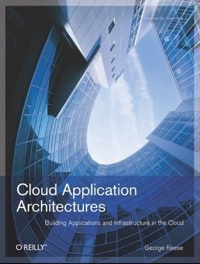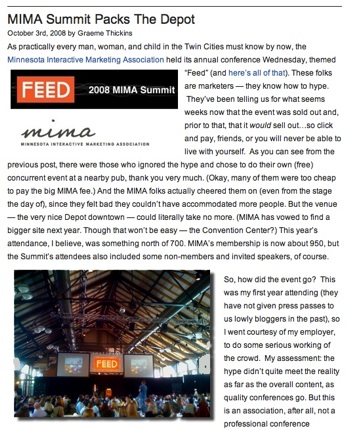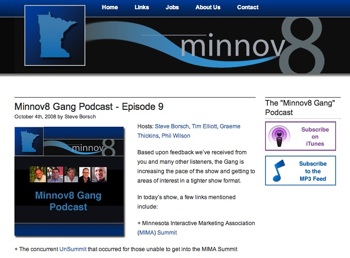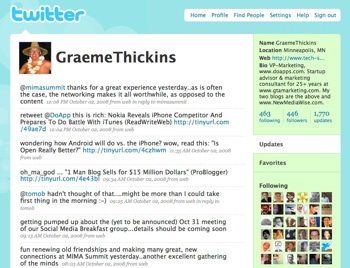 I read recently an analyst’s prediction that social commerce — of which Facebook commerce is a subset — would be a $5 billion business by 2015. Does that sound big to you? It didn’t to me — not considering that Forrester says online retail overall will be $279 billion by 2015.
I read recently an analyst’s prediction that social commerce — of which Facebook commerce is a subset — would be a $5 billion business by 2015. Does that sound big to you? It didn’t to me — not considering that Forrester says online retail overall will be $279 billion by 2015.
While I was mulling these numbers, I happened to delve into the blog of Sucharita Mulpuru, a VP at Forrester and a well known ebusiness analyst. I discovered she’s been a longtime bear on F-commerce. Then I saw a sharply worded story pop up yesterday morning, first in a Shop.org newsletter I receive. It was based on a Bloomberg story: “Retailers Shut Facebook Storefronts Amid Apathy.” What one might call the money quote the reporter ended her story with: ‘
“I give so-called F-commerce an ‘F’ ”
It was a quote attributed to Wade Gerten, CEO of 8thBridge, a Minneapolis-based social-commerce technology firm. 
The story ended abruptly with that quote — leaving me hungering for more. But I didn’t have to wait long, because last night a quick-comeback rebuttal to the story suddenly appeared on Forbes.com. It was a guest post from that very same Wade Gerten, entitled “Facebook Shopping Apathy? Smart Plays On F-Commerce.” His company, 8thBridge, was a much-heralded startup here in 2009 that hitched its wagon to Facebook commerce, and soon after raised $15 million in two rounds of venture capital. Turns out he and his team had a wild day, he told me, pulling together that post to counter the Bloomberg piece. A key excerpt from the post is the conclusion:
“Tomorrow’s online shopping experience will look very different than the product catalog-specific experience we have today. The rich intent data available via the Open Graph will enable brands to usher in a new era of ecommerce that is shaped by people and around people.
This is the most exciting innovation to hit e-commerce since its birth in the Nineties! Most of the brands working in this space are anything but apathetic.”
 Gerten also talks in the post about his firm’s recent partnership with TicketMaster. It was one month ago today that 8thBridge announced it had launched an app that people could add to their Facebook Timeline to share their plans to attend concerts, their actual attendance at a concert, and share ticket buying with their friends. They noted people could purchase tickets within the app without leaving Facebook.
Gerten also talks in the post about his firm’s recent partnership with TicketMaster. It was one month ago today that 8thBridge announced it had launched an app that people could add to their Facebook Timeline to share their plans to attend concerts, their actual attendance at a concert, and share ticket buying with their friends. They noted people could purchase tickets within the app without leaving Facebook.
On its web site, 8thBridge claims that more than 50 leading brands in fashion, retail, and entertainment have launched social commerce initiatives with its technology — some of those other brands being Delta Air Lines, Oscar de la Renta, Electronic Arts, and Avon. The site doesn’t say how many of these “initiatives” may have been of the “storefront” variety that the Bloomberg story says are being closed — nor, of course, does it name which of its clients had (or still may have) such storefronts. But I think it’s fair to say the Open Graph initiatives are what 8thBridge is now very much concentrating on.
As you might imagine, 8thBridge is not the only company defending F-commerce. Here’s another link, also on Bloomberg, which appeared prior to the recent dustup (it’s a video interview): “Payvment CEO Sees ‘Huge Business’ on Facebook.” But note this guy is also hedging his bets — spreading his risk if you will, naming both Twitter and Google+ as other platforms where his firm can make money from its technology.
On top of all this recent uproar about Facebook commerce is the absolute juggernaut that is Pinterest!  I’ve gone on record on the past two weekly Minnov8 Gang podcasts as saying this site will be a huge disruptor in social commerce. But that’s the topic of another blog post — actually, countless hundreds that will no doubt be appearing soon everywhere! (By the way, please follow me here on Pinterest: www.pinterest.com/graemethickins.)
I’ve gone on record on the past two weekly Minnov8 Gang podcasts as saying this site will be a huge disruptor in social commerce. But that’s the topic of another blog post — actually, countless hundreds that will no doubt be appearing soon everywhere! (By the way, please follow me here on Pinterest: www.pinterest.com/graemethickins.)
What future do you see for Facebook commerce? Or for social commerce in general? Please comment!
(Facebook logo-cart image copyright Weever Media.)


 It was sponsored by, you guessed it,
It was sponsored by, you guessed it,  We talked about a number of topics, including recent confabs in the Twin Cities, the economic times, social media (of course), and, hey, even wine.
We talked about a number of topics, including recent confabs in the Twin Cities, the economic times, social media (of course), and, hey, even wine. 


Recent Comments